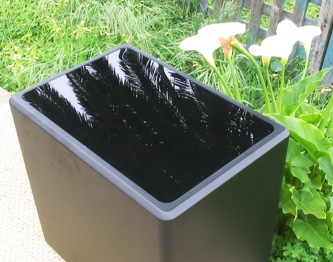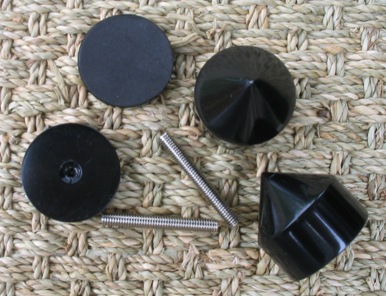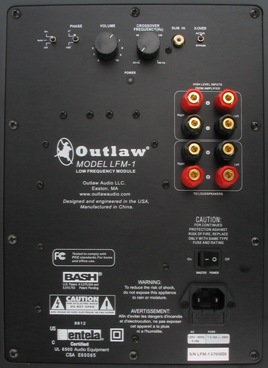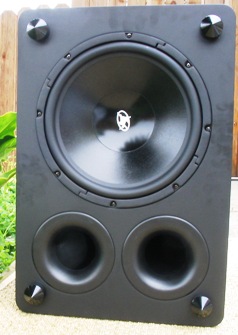Introduction
There is a market for the guy willing to rebel against the system, as
demonstrated by Ralph Nader receiving 2.78 million votes in the 2000
presidential election. The US was founded on this premise. If you don’t like
the way things are, all you need to do is go and change them.
Outlaw Audio took this to heart, in name and in business model. By departing
from traditional manufacturing, marketing, and sales practices, they have
truly bucked the system in the world of audio. In short, they spec the
product, the Outlaw engineers design it, they choose the best factory to
outsource manufacturing (called OEM), and they sell it to the public exclusively
on their website.
The efficiencies are obvious. By cutting the dealer and
overhead of a factory out of the equation, they can focus on creating a high
end audio product at a lower cost than their competitors.
However, the Outlaw business model does not allow you to readily go to your
local hi-fi store and demo the product, so you must place some trust in
reviews. Hence, a review of the Outlaw LFM-1 subwoofer here and now.
The Design
Removing the 58 pound cabinet from the box and packing material forecasted that
it was well constructed. The subwoofer is heavy and solid as an oak. Outlaw
provided instructions for how to unpack the LFM-1 in a conspicuous location
under the primary box flaps. Following the directions, I was able to remove
it from the box alone with little problem. It is a small detail that is not
always present in the packaging of heavy audio equipment. However, carrying
the cabinet up the stairs was a challenge. If only Outlaw could supply a
dolly in the box as well . . . .
 The
LFM-1’s frame is outfitted with a black satin finish, rounded corners, and a
smoked-Plexiglas top. It is engineered with a 12” inch down-firing
long-throw driver with dual down-firing ports and a 325 watt amplifier. The
cabinet rests on large screw-in carpet spikes. Outlaw also supplied “dimpled
discs” to rest the spikes on when setting up the on a hard surface such as
tile or hard wood floors. My parquet floors (and my wife) appreciated this
extra touch.
The
LFM-1’s frame is outfitted with a black satin finish, rounded corners, and a
smoked-Plexiglas top. It is engineered with a 12” inch down-firing
long-throw driver with dual down-firing ports and a 325 watt amplifier. The
cabinet rests on large screw-in carpet spikes. Outlaw also supplied “dimpled
discs” to rest the spikes on when setting up the on a hard surface such as
tile or hard wood floors. My parquet floors (and my wife) appreciated this
extra touch.
Positioning the LFM-1 on the discs was the only time a second
person was required in the setup of the subwoofer. I was immediately struck
that it was a professional looking product. Not that I would recommend doing
so, but the LFM-1 could pass unnoticed as an end table (assuming the rest of
your decor is black satin and glass).

I prefer a port-less (sealed) subwoofer configuration, as it is usually
ensures a more flat response with more realistic tone. The drawback is you
need a larger cabinet for the same output as a ported subwoofer.
The down
firing port design of the LFM-1 has a few benefits. While subwoofer
frequency can vary based on room conditions and placement, the down-firing
ports eliminate the throaty "whoosh" that you can some times get from side-firing ports. This
configuration also allows you to set up the LFM-1 next to a wall or in a
corner without consideration of the ports. The result in my listening
environment was an impressive, even response with nice tonality. It makes me
consider changing my view on ported subwoofers.
The LFM-1 contains a standard set of powered subwoofer connectivity options.
There is a single line-level input for connecting to your A/V receiver or
preamp. In addition, there are high-level inputs and outputs for pass-through from your amplifier to your speakers. An X-over switch allows for
enabling the Linkwitz-Reilly 4th Order Low Pass Variable crossover. Power
can be left on or configured to turn on a when an audio signal is sensed.
The crossover frequency can be set from 40 Hz to 180 Hz. There also a
volume control and a switch to reverse phase.
 The
Listening
The
Listening
For
this review, the LFM-1 was set up with two home theater configurations. The
first was with Snell XA 60 Tower speakers with the crossover set to 40 Hz,
the second with M&K LCR 750 THX satellite speakers with the crossover set to
80 Hz. After the volume was leveled with frequency sweeps and a sound level
meter, the LFM-1 matched both situations very well.
Tonal match with the
Snell XA 60’s was transparent. Match with the LCR 750 satellite’s was very
good, but the LFM-1 was not quite as detailed as with the sealed M&K
V-1250 THX subwoofer which was designed specifically as a compliment for the
satellite speakers. In both setups, dance music had a warm thump, classical
symphonies had more depth, and fight scenes from the movie Gladiator shook
the room.
A good subwoofer should be present but not noticed. The LFM-1 did
not draw my attention to it with unnatural sound. Rather, it simply added depth to
the listening material.
Outlaw Audio’s LFM-1 Owner’s manual suggests using two LFM-1’s for a
scattered subwoofer system. While it is obviously in Outlaw’s interest to
sell two subwoofer’s rather than one, the suggestion has merit. Due to the
subjective nature of listening areas, a configuration with two subwoofers
placed at varying locations will produce a smoother more evenly distributed
bass response across your home theater, i.e., with less dips and peaks. Outlaw even gives a discount for
this configuration, offering two LFM-1’s for $999.
 Secrets
recently auditioned the SVS 25-31 PCi Powered Subwoofer, a similarly priced
subwoofer with outstanding frequency response. In my opinion the LFM-1 had
slightly better detail and a smoother sound (although the SVS' high SPL
output is tough to beat). However, the most obvious
difference between the two units is the cabinetry. The black satin and smoked
Plexiglas finish rivals the look of subwoofers at twice the price. The LFM-1
is guaranteed to pass the wife test.
Secrets
recently auditioned the SVS 25-31 PCi Powered Subwoofer, a similarly priced
subwoofer with outstanding frequency response. In my opinion the LFM-1 had
slightly better detail and a smoother sound (although the SVS' high SPL
output is tough to beat). However, the most obvious
difference between the two units is the cabinetry. The black satin and smoked
Plexiglas finish rivals the look of subwoofers at twice the price. The LFM-1
is guaranteed to pass the wife test.
Conclusions
Outlaw Audio is an exciting company. In terms of
performance vs. price, they are competing with equipment that
costs twice as much and beyond, yet they do so without cutting corners on
the product. During the review, I was continually impressed with small
details such as the “dimpled discs” that could have easily been overlooked
to save a few dollars in manufacturing. Yet, it is not the “gravy” that wins
over this reviewer. The bass that can be felt in the depth of my belly was
clearly the substance. Outlaw is certainly setting themselves up for
customer retention, and have succeeded in winning at least one over.
- Aaron Hodges -
Equipment used for comparison, reference, and pleasure:
M&K V-1250 THX Powered Subwoofers
M&K LCR-750 THX Loudspeakers
M&K 550 THX Loudspeakers
SVS 25-31 PCi Powered Subwoofer
Aragon 8008x3 Power Amplifier
Yamaha RX-V995 Digital Receiver
Snell XA60 Tower Loudspeakers
Toshiba SD-2109 DVD Player
NEC LT150 DLP Projector